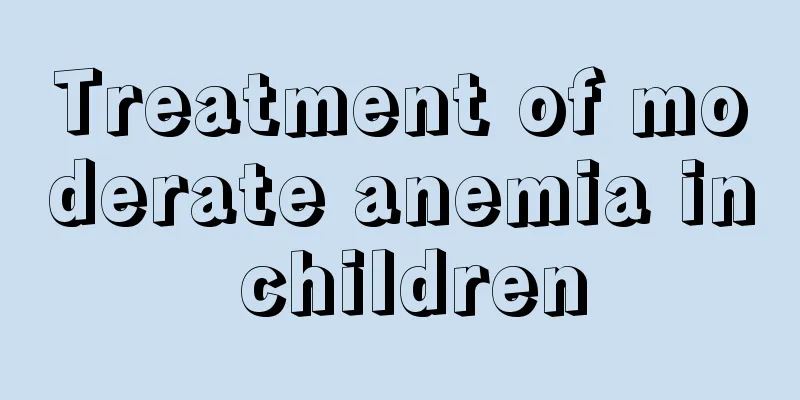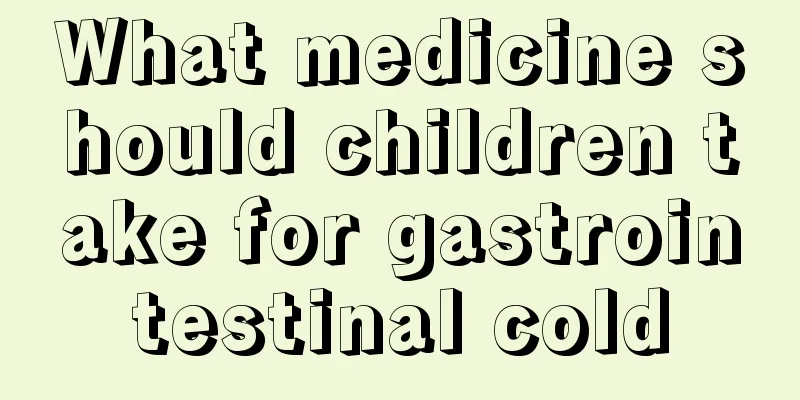Treatment of moderate anemia in children

|
Children's anemia is a problem that parents often face during their children's development. If a child has moderate anemia, many symptoms will appear, which will also bring a lot of harm to the child. After the child is anemic, the body's resistance is particularly poor. If we observe carefully in life, we will find that many children with anemia are prone to diseases, both large and small. Therefore, children with anemia must be treated immediately. So how should moderate anemia in young children be treated? For infants under one year old, hemoglobin below 11 grams is considered anemia; for children over one year old, hemoglobin below 11.5 grams is considered anemia. However, infants will experience an unstable period of decreased hemoglobin between 6-10 months. If the child does not show symptoms such as lethargy, decreased appetite, restless sleep, pale complexion and nails, he or she must not be diagnosed with anemia. As the baby gets older, the body's erythropoietin production increases, the bone marrow hematopoietic function gradually recovers, the number of red blood cells and hemoglobin slowly increases, and anemia is alleviated. To determine whether the patient has iron deficiency anemia, venous blood should be drawn to test the iron content in the blood. The most common anemia in children is iron deficiency anemia. This is because: (l) Children are born with insufficient iron storage. The iron that a normal full-term newborn obtains from the mother is sufficient for its hematopoietic needs for 3 to 4 months after birth. However, premature birth, twins, fetal blood loss and maternal iron deficiency anemia can all lead to insufficient iron storage in children. (2) Insufficient iron intake. The diet of newborns mainly consists of human milk or cow's milk, and the iron content in both human milk and cow's milk is low. If they are fed only with milk without adding iron-rich complementary foods in time, anemia is likely to occur. (3) Growth and development decisions. Growth and development are rapid during infancy. At 3 to 5 months, the baby's weight is twice that of his birth weight, and at 1 year old, it is three times his birth weight. If the baby is premature, the weight gain is faster. As body weight increases, blood volume also increases rapidly, making iron deficiency more likely to occur, leading to anemia. (4) Excessive iron loss. Normal infants excrete more iron every day than adults, and lose relatively more iron through the skin. If they are allergic to protein and have small intestinal bleeding, they lose even more iron. In addition, some diseases such as chronic diarrhea, intussusception, intestinal polyps, etc. can increase iron consumption and cause anemia. If iron deficiency anemia is confirmed, the mother should supplement the baby with iron if the baby is breastfed. Don't blindly believe in iron-fortified milk powder or rice noodles, because the iron in most foods is highly sticky and cannot be absorbed by the human body. Although there is little iron in breast milk, it is enough to meet the needs of the baby, and it is active iron with a very high absorption rate. The absorption rate of iron in breast milk (50-75%) is much higher than that of iron-fortified milk powder (only 4%), and milk will cause the iron in the child's body to be lost through feces. In other words, children who are breastfed generally do not suffer from anemia, but are likely to suffer from iron deficiency when they eat milk powder. Children's nutrition should be supplemented through diet, and medications should not be used without clear indications, as this will easily cause more problems. Unless the baby's anemia is particularly severe, it is necessary to use medication to supplement iron under the guidance of a doctor. The hemoglobin in animal food is easily absorbed, so animal blood and offal are more effective in preventing and treating anemia in babies. Some iron in plants is not easily absorbed by the human body. For example, although spinach is rich in iron, the oxalic acid in spinach easily combines with iron, making it difficult to absorb and utilize. Mothers can eat more lean meat, black carp, shrimp, kelp, seaweed, black fungus, pumpkin seeds, sesame, soybeans, black beans, black sesame, red fruits, red dates, and dark-colored vegetables and fruits. Mixing animal and plant foods will increase the absorption rate of iron. In fact, when treating children with anemia, the most important thing is to improve their diet, because the reason for anemia in many children is due to unreasonable diet, which leads to severe iron deficiency and caused anemia. Children with anemia need blood and iron supplements. This is the best treatment method. When children are anemic, they must also control their children's unwillingness to eat and serious picky eating. These must be improved, otherwise the children will continue to be anemic. |
<<: What to do if your one-year-old baby is anemic
>>: Is it okay for a baby to take a bath every day?
Recommend
My baby has a lot of small red spots on his body. What's going on?
Adults are very concerned about children's he...
What to do if the baby can't hold the nipple
When a baby is fed for the first time, the nipple...
Signs of high muscle tone in babies
Newborn babies have a higher chance of getting si...
How to solve the problem of anal redness in children
Careful mothers will find that the skin around th...
Symptoms of baby's eyelid hemangioma
Because the immune organs of newborns are not ful...
Treatment cycle and related treatment methods for neonatal sepsis
The treatment cycle of neonatal sepsis causes our...
What to do if your nine-month-old baby has a hoarse voice
The problem of hoarseness in nine-month-old babie...
One-year-old child always blinks when hitting things
The healthy growth of the baby is very important,...
What should I do if my child's teeth are loose?
Children are naturally active, running and jumpin...
What is persistent diarrhea in children?
Speaking of diarrhea, I believe many people are f...
What to do if your baby has a fever and bad breath
A baby is the bond of a family and the driving fo...
A three-month-old child has a fever of more than 385 degrees
Babies over three months old have relatively poor...
What is the treatment for children with intellectual disability?
Many parents like geniuses, but not every child i...
What are the symptoms of sinusitis in children?
Sinusitis in children is actually very common in ...
Why are baby's eyes yellow?
People will undergo a myriad of other changes as ...









